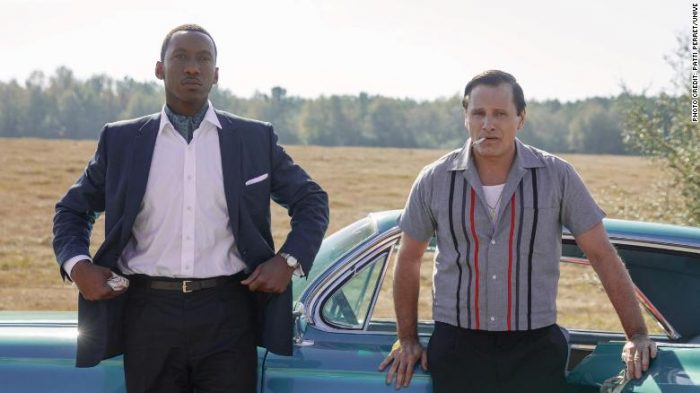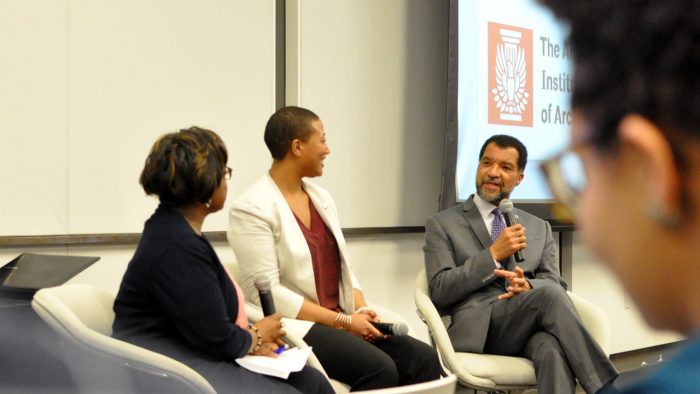ICYMI: Highlights from the week that was Feb. 23 – March 2, 2019
No one can keep up with everything, so let us do it for you. We’ll gather the top Smithsonian stories from across the country and around the world each week so you’ll never be at a loss for conversation around the water cooler.
We looked more deeply at issues of diversity this week, from the lack of it in the arts, to the untold stories of indigenous women to the way movies look at racism through a white filter.

Red dresses stand in for missing indigenous women in new exhibit coming to D.C.
Los Angeles Times, February 26

“The REDress Project” installed in 2011. (Suzanne Morisette)
Metis artist Jamie Black of Winnipeg, Canada, uses red dresses in her work to represent missing or murdered indigenous women. For the first time, her artwork will travel to the U.S. outside the National Museum of the American Indian in Washington.
“The REDress Project” will be displayed Friday until March 31 in honor of Women’s History Month. The dresses, which will be displayed along the museum’s river walk, have been donated and installed previously at several Canadian sites since 2011. Read more from the Los Angeles Times.
A new documentary shows how the real-life Green Book helped black motorists navigate a segregated America
CNN, February 25

Mahershala Ali as Dr. Donald Shirley and Viggo Mortensen as Tony Vallelonga in “Green Book,” directed by Peter Farrelly.
In the Oscar-winning “Green Book,” the actual Green Book is relegated to a background prop.
Paintings of the Obamas gave a huge attendance boost to the National Portrait Gallery.
Artsy, February 27

Visitors to the National Portrait Gallery crowd around the portrait of Michelle Obama by Amy Sherald. photo by smallcurio, via Flickr.
The National Portrait Gallery (NPG) scored record attendance figures in 2018 as 2.3 million people walked through the Washington, D.C., museum, about 1 million more visitors than the year before. The boost in visitors to the institution, which shares the Old Patent Office Building with the Smithsonian American Art Museum, is due in no small part to the two new portraits that were unveiled on February 12, 2018: those of President Barack Obama and First Lady Michelle Obama, painted by Kehinde Wiley and Amy Sherald. Read more from Artsy.
5 Takeaways from the AIA’s Latest Discussion of Its Diversity Problem
Architects discussed the crucial steps toward building a more equitable profession, at a panel in Washington, D.C.
Architectural Digest, February 27

Michelle Joan Wilkinson (left) moderates a panel discussion with Kimberly Dowdell, and William Bates. Photo by Deane Madsen
It’s no secret that the architectural profession has a diversity problem. Of the AIA’s 94,000 members, just 2,270 are African American, and of those, 452 are women, according to data from the Directory of African American Architects. And, for now at least, the future doesn’t seem to be looking much brighter: Only five percent of students enrolled in architecture programs are African American, according to demographic data compiled by the National Council of Architectural Registration Boards.
Last night, a group of architects, advocates, and curators assembled at the Washington, D.C., chapter of the American Institute of Architects (AIA) to unpack and address some of these concerns. At an evening event titled “Embracing Our Differences, Changing the World,” AIA President William Bates and National Organization of Minority Architects (NOMA) President Kimberly Dowdell discussed equity, diversity, and inclusion with Michelle Joan Wilkinson, a curator of the National Museum of African American History and Culture, before a packed house. “It’s not a secret that architecture as a profession has fallen behind,” Bates conceded, adding that the percentage of black students in architecture programs is “not that different from what it was 50 years ago.” Read more from Architectural Digest.
Posted: 8 March 2019






